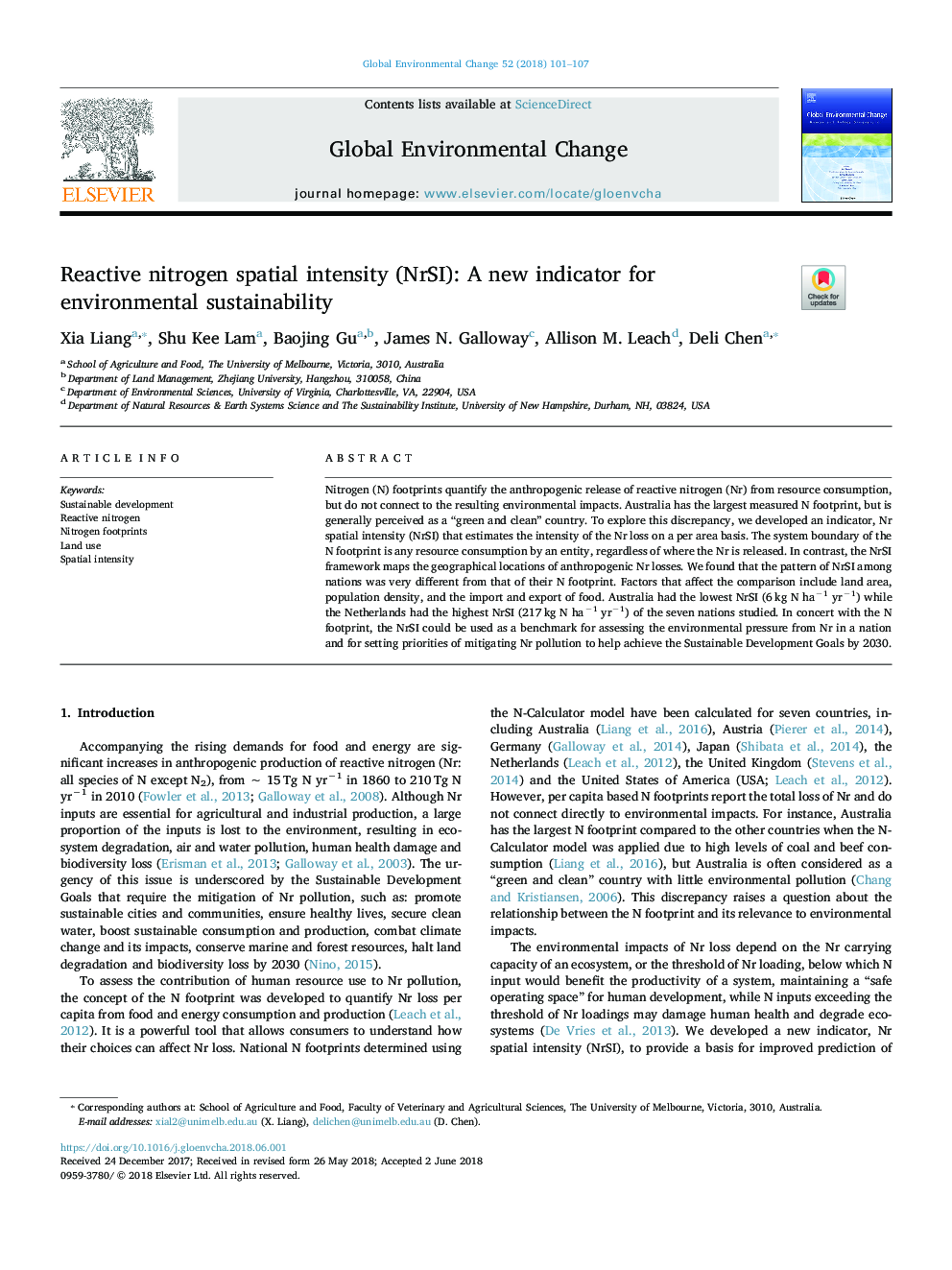| Article ID | Journal | Published Year | Pages | File Type |
|---|---|---|---|---|
| 7468677 | Global Environmental Change | 2018 | 7 Pages |
Abstract
Nitrogen (N) footprints quantify the anthropogenic release of reactive nitrogen (Nr) from resource consumption, but do not connect to the resulting environmental impacts. Australia has the largest measured N footprint, but is generally perceived as a “green and clean” country. To explore this discrepancy, we developed an indicator, Nr spatial intensity (NrSI) that estimates the intensity of the Nr loss on a per area basis. The system boundary of the N footprint is any resource consumption by an entity, regardless of where the Nr is released. In contrast, the NrSI framework maps the geographical locations of anthropogenic Nr losses. We found that the pattern of NrSI among nations was very different from that of their N footprint. Factors that affect the comparison include land area, population density, and the import and export of food. Australia had the lowest NrSI (6â¯kg N haâ1 yrâ1) while the Netherlands had the highest NrSI (217â¯kg N haâ1 yrâ1) of the seven nations studied. In concert with the N footprint, the NrSI could be used as a benchmark for assessing the environmental pressure from Nr in a nation and for setting priorities of mitigating Nr pollution to help achieve the Sustainable Development Goals by 2030.
Related Topics
Life Sciences
Environmental Science
Environmental Science (General)
Authors
Xia Liang, Shu Kee Lam, Baojing Gu, James N. Galloway, Allison M. Leach, Deli Chen,
